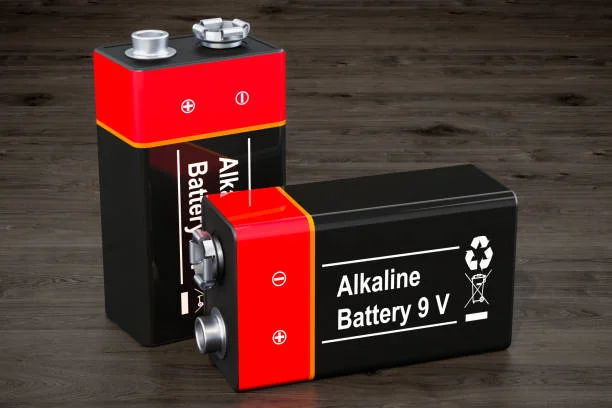From the piercing 3am chirp of a dying smoke alarm to a brand-new toy going silent unexpectedly, we’ve all experienced the frustration of a failed battery for 9V Lithium Batteries.
These moments highlight that the standard batteries we often rely on aren’t always sufficient for the job.
Fortunately, battery technology has evolved significantly.
The modern 9V lithium battery chemistry or 9V Lithium Batteries offers a clear and powerful upgrade for devices that demand long-term reliability and consistent output.
Table of Contents
- What Makes a 9V Lithium Battery a Superior Power Source?
- Rechargeable 9V Li-ion Battery vs. Traditional Alternatives
- Where a 9V Lithium Battery Excels: Top Applications
- A Quick Buyer’s Guide
- From Gadgets to Gear: Know When to Upgrade Your Power Source
What Makes a 9V Lithium Battery a Superior Power Source?
The modern chemistry of a 9V lithium battery makes it a fundamentally different and more capable power source for your electronics.
The secret lies in its superior energy density and consistent power delivery.
This advanced technology packs more fuel into the same small package, from a musician’s wireless microphone to sensitive medical devices.
Unlike alkaline types that slowly fade and cause your devices to underperform, a lithium battery provides steady voltage. It delivers full power right until the end of its cycle.
They also have impressive longevity. A 9V Li-ion battery, both in use and in storage, with a shelf life that can stretch for a decade, it’s the perfect choice for emergency kits and that all-important lithium 9V battery for smoke detectors.
You can trust it will be ready to go years after you buy it.
You might also like: A fresh take that complements what you just read.
Rechargeable 9V Li-ion Battery vs. Traditional Alternatives
When you’re standing in the aisle looking at batteries, you typically face two main choices: the familiar, disposable alkaline and the modern rechargeable Li-ion.
They might do the same job, but how they perform over their lifetime is vastly different. Let’s put them head-to-head:
- Upfront & Long-Term Cost
- Rechargeable Li-ion: Higher initial investment for the battery and charger. However, the long-term cost is extremely low, saving you significant money by replacing hundreds of single-use batteries.
- Alkaline: Very low upfront cost for a single battery. The long-term cost is high due to the need for continuous repurchasing.
- Device Performance
- Rechargeable Li-ion: Delivers consistent, peak power throughout its entire cycle (a “flat voltage curve”). Your device performs at its best until the battery is fully drained.
- Alkaline: Power gradually fades as the battery is used (a “voltage sag”). This causes devices to slow down, dim, or underperform well before the battery is completely dead.
- Convenience & Environmental Footprint
- Rechargeable Li-ion: A fresh battery is always just a quick swap away from its charger. You drastically reduce waste and your environmental impact.
- Alkaline: A dead battery requires a trip to the store or digging through a drawer. Each used battery is another item destined for the landfill.
Where a 9V Lithium Battery Excels: Top Applications
Seeing the clear financial and practical wins of a rechargeable 9V lithium battery or 9V Lithium Batteries makes the choice easier.
The real magic of this battery is how it performs under pressure. Let’s start with the most important application of all: keeping your home and family safe.
Using a 9V li ion battery or 9V Lithium Batteries for smoke detectors and carbon monoxide alarms is one of the smartest upgrades you can make.
Its long life and reliability mean you get peace of mind, free from those annoying low-battery chirps and, more importantly, confident that your first line of defense is always ready.
For professionals and hobbyists, the benefits are just as clear.
Ask any musician, and they’ll tell you the worst thing that can happen on stage is gear failure.
A 9-volt lithium-ion battery provides the sustained, high-drain power needed for wireless microphones and is the best 9V battery or 9V Lithium Batteries for guitar pedals, ensuring a clean signal and flawless performance when it matters most.
And let’s not forget the high-tech gadgets and toys. A powerful li ion battery ensures that walkie-talkies have a clear range and that remote controls stay responsive for longer, preventing the disappointment of a fun activity getting cut short.
A Quick Buyer’s Guide
While 9V lithium batteries may look similar, a few key details separate a top-tier battery from a mediocre one.
First, check the capacity, which is measured in milliampere-hours (mAh). The easiest way to think of mAh is as the battery’s fuel tank.
A higher number, such as 1200mAh, means a longer runtime before you need to recharge. For a high-drain device like a wireless microphone or a child’s remote-control car, a higher mAh is better.
For a low-drain device like a smoke alarm, standard capacity works, but a larger “tank” still means more years between replacements.
Next, and this is a critical tip, look for built-in safety features.
A quality rechargeable li ion battery must include internal protection circuits to prevent overcharging, over-discharging, short-circuiting, and overheating.
Reputable brands will clearly state these safety certifications on their packaging or product page. Skimping on safety features is never worth the small savings, so always prioritize batteries that list these protections.
Finally, think in terms of long-term value, not just upfront cost.
A slightly more expensive battery that has 1000+ charge cycles is a far better investment than a cheaper one that only lasts for 500.
Once you’ve mastered choosing the right power for your small electronics, it’s natural to start thinking about your larger power needs.
From Gadgets to Gear: Know When to Upgrade Your Power Source
The key is to recognize when your power needs have graduated to the next level.
Here’s a practical tip: audit your activities.
Think about situations where you’re away from a wall outlet. A musician playing at an outdoor festival, a photographer on a remote shoot, or a family enjoying a summer weekend at a state park all face the same challenge: keeping essential gear running.
This is the point where you need to think beyond small batteries and consider a portable power station.
When choosing a larger power source, focus on two things: capacity and outputs.
First, estimate your power needs by calculating “watt-hours.” Check the wattage of the devices you want to run (e.g., a laptop at 60W, a small cooler at 40W) and multiply by the hours you’ll use them. This tells you the “fuel tank” size you need. Second, check the output ports.
Ensure the unit has the standard AC outlets, USB-A, and USB-C ports that your specific gear requires.
For true off-grid independence, consider a model that can be recharged with solar panels, a perfect solution for preparing for anything from a power outage to a sunny camping trip.
Power Your Life with Confidence
Ultimately, choosing the right battery is about reliability and peace of mind.
A superior 9V lithium batteries ensures your critical devices are always ready, and rechargeable models save you money and reduce waste.
It’s a small change that makes a big difference in your daily life, from home safety to professional performance. You get the power you need, when you need it, without a second thought.
Discover fresh content every day—visit 2A Magazine.







